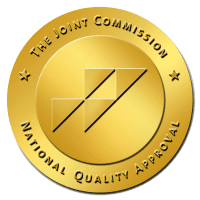Every year in the United States, there are more than 47,000 overdose deaths stemming from opioid abuse. It has been the number one cause of accidental death for more than a decade, surpassing even deaths from car crashes.
While opioid addiction is a serious national epidemic, there are many promising treatments available. These include behavioral health therapy and different medications, like Suboxone. Like any substance you put in your body, even helpful medications have risks.
This article covers the side effects of suboxone strips. It also explores how the drug works and the advantages it can afford. Keep reading to learn if it is the best option for you on your recovery journey.
Opioid Basics
Opioids are a class of drugs often taken to treat acute and/or chronic pain. Prescriptions, as well as illicit street drugs, are also abused recreationally. The class of opioids includes both opiates and synthetic opioids.
Opiates are drugs derived from the opium poppy, a plant that originated in the Middle East but is now naturalized across most of Europe and Asia. Common examples include heroin and codeine.
Synthetic opioids include hydrocodone, oxycodone, methadone, and morphine. Popular brand names are Oxycontin, Vicodin, and Dilaudid.
Opioids work by binding to opioid receptors in the brain, spinal cord, and other places throughout the body. This triggers feelings of profound relaxation, relief from pain, a lowered respiratory rate, and feelings of euphoria.
What Is Opioid Withdrawal?
The brain naturally produces opioids, but not anywhere close to the amount found in prescription opioids or opiates. When these are taken, the body begins to rely on them as a “reward,” the main source of pain relief and relaxation. When the person stops taking these drugs, the body reacts in very negative ways.
There are many different potential side effects of opioid withdrawal. Common ones include:
- Muscle aches
- Restlessness and anxiety
- Excessive sweating
- Runny nose
- Sleep disruption
- Nausea and vomiting
- Diarrhea
- Abdominal discomfort
- Increased heart rate
The presence and severity of opioid withdrawal symptoms depend on several factors. The most influential factors are the duration and frequency of drug abuse.
Also, symptoms can last anywhere from a few days to many weeks or months. In almost every case, withdrawal side effects lessen over time.
What Is Suboxone?
Suboxone is a “medication-assisted treatment” (MAT) for opiates, like heroin, or prescription opioids. It was first approved by the U.S. Food and Drug Administration (FDA) as a treatment for opioid addiction in 2002.
Suboxone is the brand name that combines two prescription drugs: buprenorphine and naloxone. These have been used independently to address the side effects of opioid withdrawal for decades.
Buprenorphine
Buprenorphine is a drug that was developed in the 1940s and became a popular pain medication in the 1960s. It is still prescribed for acute pain, albeit in small doses and for short durations.
Buprenorphine is a synthetic drug meant to mimic an alkaloid compound that comes from the poppy flower. It is a partial opioid agonist, meaning it interrupts the signals that indicate pain that are sent between nerves in the body and the brain.
Buprenorphine essentially acts as a mild opioid. It creates similar physiological effects, although in a milder form. This helps dampen the side effects of withdrawal and increases the likelihood of recovery.
Buprenorphine is a Schedule III drug, so it is illegal to possess without a prescription. That also means it has a moderate to low potential for physical or psychological dependence. This contributes to its safety when used under proper medical supervision.
Naloxone
Naloxone is also a synthetic drug that works similarly to morphine. It is an opioid antagonist, meaning it blocks opiate receptors in the nervous system. This ability also makes Naloxone a useful medication for reversing the effects of opioid overdose, while it is occurring.
Combined with Buprenorphine (in Suboxone), Naloxone diminishes the impact of opioids that create a high, like other opioid medications or illicit drugs. This deters the misuse of Suboxone.
Is Suboxone Affective?
Suboxone has become one of the preferred MATs for opioid addiction. It is one of the most impactful medications available for diminishing or eliminating withdrawal symptoms.
Another reason Suboxone is so popular is its effectiveness as a short- or long-term treatment. This makes it useful for detox as well as recovery maintenance.
Unlike other forms of MAT for opioid withdrawal, Suboxone addiction is rare. It also has minimal side effects (see below).
Keep in mind that addiction recovery success increases when you combine MAT with other forms of rehabilitation. These include cognitive behavioral therapy, which addresses the underlying causes of addiction. Patients may also benefit from family or group therapy, as well as other supports, like vocational or life skills classes.
What Are Suboxone Strips?
There are many different ways to administer Suboxone. Historically, Buprenorphine was taken through an injection. This extended the dose, allowed better oversight of drug administration, and helped increase treatment adherence.
Suboxone can also be taken as tablets. Suboxone strips became available in 2018. These are thin films that you place under your tongue that dissolve quickly and release the medication into your bloodstream.
Suboxone films come in varying strengths. These are:
- 2 milligrams (mg) of Buprenorphine/0.5 mg of Naloxone
- 4 mg of Buprenorphine/1 mg of Naloxone
- 8 mg of Buprenorphine/2 mg of Naloxone
- 12 mg of Buprenorphine/3 mg of Naloxone
In most cases, people start with smaller doses, then increase as needed. The goal is to take the smallest dose possible while achieving the desired effects. The appropriate amount depends on the patient’s body weight, severity of addiction, and general tolerance to the medication.
What Are the Advantages of Suboxone Strips?
There are many benefits to this method of taking Suboxone. First, they are simple to use and are a welcomed alternative for people who have difficulty swallowing pills. Ease of use also can help improve adherence to the treatment regimen.
Next, since the medication bypasses the digestive system, it works very quickly. This can be useful in scenarios where fast relief from withdrawal symptoms is needed. It also helps avoid any gastrointestinal issues common with these types of medications.
What Are the Side Effects of Suboxone Strips?
There are potential side effects associated with taking Suboxone. Here are the main ones to consider.
(Keep in mind that these are present with all formulations of Suboxone. However, Suboxone strips can help lessen some of them, especially those related to gastrointestinal stress.)
Nausea and Vomiting
One of the most common Suboxone side effects is nausea and stomach cramps. The severity fluctuates from person to person, but it can be severe enough to induce vomiting.
Fortunately, as mentioned, Suboxone strips (versus a pill) can reduce this risk. The other good news is that, in most patients, these effects almost always dissipate after using the medication for a few weeks.
Headaches
Headaches are one of the more common side effects of Suboxone strips. In most cases, though, they are very mild and have short durations.
Drowsiness and Insomnia
Suboxone can lead to disruptions in sleep patterns. This includes insomnia as well as excessive drowsiness.
These effects tend to fluctuate a great deal depending on dosage. So, if the ones you are experiencing are significant, alert our treatment provider. They may be able to adjust the dosage to either diminish or completely eradicate these symptoms.
Changes in Mood
Suboxone can affect your emotional stability. This can lead to feelings of irritability and anxiety, as well as depression, in some patients. Like other symptoms on this list, these side effects can be mild but should be taken seriously if they worsen (rather than dissipate) over time.
Other Side Effects
There are other side effects that patients have experienced with Suboxone strips. These are far less common than the ones listed above but have manifested in some individuals. They include:
- Elevated heart rate
- Increase in blood pressure
- Darkened skin
- Swelling of face or extremities
- Tightness in chest
- Itching, hives, or skin rash
- Loss of appetite
- Rapid weight gain or loss
- Agitation, trembling, or overactive reflexes
If you experience any of these symptoms, be sure to let your healthcare provider know before taking another dose. They may suggest alternative medications or adjust the prescription.
There also are symptoms that are specifically associated with Suboxone overdose. These include:
- Extreme confusion
- Excessive drowsiness
- Extreme weakness
- Blurred vision, dizziness, and fainting
- Pinpoint pupils
- Trouble breathing
- Pale or blue lips or skin
Overdose from Suboxone is extremely rare. However, if you or someone you know who is taking the medication experiences any of the above symptoms, you should immediately seek medication attention.
Find Addiction Recovery Services Near You
Now that you understand the side effects of suboxone strips, including the physical and mental impacts they can have, you can determine if it is right for you. Experienced rehabilitation counselors can further advise you on the best addiction treatment options based on your unique health needs and goals.
At Purpose Healing Center, we have programs at both our Scottsdale and Phoenix campuses. Our goal is to provide comprehensive yet customized addiction support plans for every individual. Reach out to us today to learn more about Suboxone strips or other treatment protocols.



